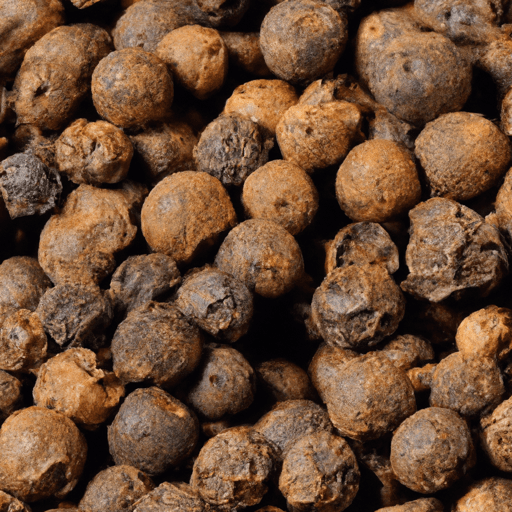Exploring the Aromatic Allure of Ground Allspice
If you’re a fan of warm and inviting flavors in your cooking, it’s time to meet ground allspice. This versatile and aromatic spice is sure to add a delightful twist to your culinary adventures. In this blog post, we’ll dive into the fascinating world of ground allspice, exploring its taste, common uses, nutritional value, and intriguing history. So let’s embark on a flavorful journey!
The Flavorful Symphony of Ground Allspice
Ground allspice boasts a unique and complex flavor that is often described as a harmonious blend of cinnamon, cloves, and nutmeg. It exudes a sweet and peppery essence with hints of warmth and earthiness. The aromatic profile of ground allspice makes it a delightful addition to both sweet and savory dishes, adding depth and character to every bite.
Unleashing the Culinary Potential
When it comes to culinary applications, ground allspice is a true superstar. Its versatility knows no bounds. Let’s take a look at some of the common uses of this delightful spice:
Baking: Ground allspice is frequently found in baked goods, such as cakes, cookies, and pies. It effortlessly infuses your sweet treats with its enchanting flavor profile.
Savory Dishes: Adding a pinch of ground allspice to savory dishes like stews, soups, and marinades can elevate their taste. It pairs exceptionally well with meats, especially pork and beef.
Pickling: The aromatic and slightly pungent nature of ground allspice lends itself perfectly to pickling. It imparts a wonderful complexity to pickled fruits and vegetables.
Spice Blends: Ground allspice is a common ingredient in various spice blends, like Jamaican jerk seasoning and Baharat. Experimenting with these spice blends will transport your taste buds to new culinary horizons.
Nutritional Bonuses
Besides being a flavor powerhouse, ground allspice also offers several nutritional benefits. It contains essential oils, antioxidants, and vitamins that contribute to your overall well-being. Some of the key nutrients found in ground allspice include:
Iron: Ground allspice contains a fair amount of iron, promoting healthy blood circulation and preventing anemia.
Vitamin C: This delightful spice is rich in vitamin C, known for its immune-boosting properties.
Manganese: Ground allspice is a good source of manganese, which contributes to bone health and plays a role in various metabolic functions.
Fiber: Just a teaspoon of ground allspice provides a small amount of fiber, supporting healthy digestion.
A Glimpse into the Past
The journey of ground allspice takes us back in time to its Caribbean origins. These small dried berries come from the Pimenta dioica plant, native to Jamaica and other parts of Central and South America. The English colonizers mistook the dried berries for peppercorns and named them “allspice” due to their resemblance to several different spices.
In addition to its rich history, ground allspice also holds cultural significance. It has become an essential ingredient in Caribbean and Middle Eastern cuisines, where its irresistible aroma and taste have been adored for centuries.
Explore, Experiment, and Indulge
Now that you’re armed with a wealth of information about ground allspice, it’s time to unleash your culinary creativity. Embrace its warm and inviting flavors, incorporate it into your favorite recipes, and enjoy the delightful experience it brings to your dishes. Whether you’re baking, pickling, or experimenting with new spice blends, ground allspice is a culinary companion that will never disappoint. So go forth, explore, experiment, and indulge in the aromatic allure of ground allspice!
Note: Ground allspice is widely available in grocery stores, but if you can’t find it, you can easily make your own by grinding whole allspice berries using a spice grinder or mortar and pestle.
Ground Allspice
Origin: Ground allspice comes from the dried berries of the Pimenta dioica tree, which is native to the Caribbean region. The name “allspice” was given to the spice because of its unique flavor, which resembles a combination of cinnamon, nutmeg, and cloves.
Common uses: Ground allspice is commonly used in both sweet and savory dishes. It is a key ingredient in Caribbean and Middle Eastern cuisines. It is often used in baking, pickling, marinades, and as a seasoning for meats, stews, and soups. It is also used in beverages like mulled wine and teas.
Nutritional benefits: Ground allspice is a good source of several important nutrients. It contains vitamins A and C, as well as minerals like manganese, iron, and calcium. It also contains essential oils like eugenol and quercetin, which can have anti-inflammatory and antioxidant properties.
Unique properties: Allspice gets its name because its flavor seems to combine the flavors of many other spices. The unique compound responsible for this flavor is called eugenol. Ground allspice has a warm and aromatic flavor profile with hints of cinnamon, nutmeg, and cloves. It is commonly used as a substitute for these spices when they are not available.
Historical significance: Allspice was discovered by Christopher Columbus during his voyages to the Caribbean in the 15th century. It was initially mistaken for a type of pepper, which led to its name “pimento,” meaning pepper in Spanish. It gained popularity in Europe and became an essential ingredient in many traditional European dishes, particularly in England and Germany. Today, it remains an important spice in Caribbean and Middle Eastern cuisines.




Use the share button below if you liked it.
It makes me smile, when I see it.